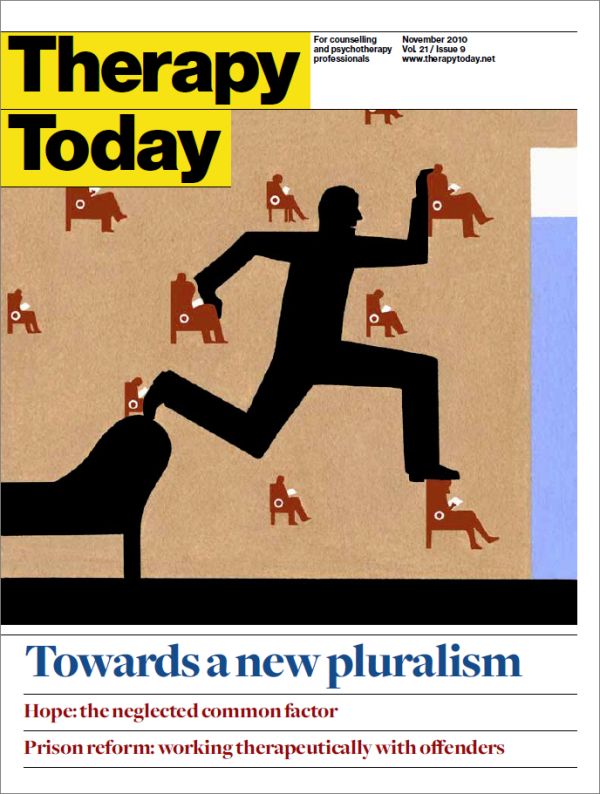In this issue
Features
Pluralism: towards a new paradigm for therapy
Is it time to move beyond schoolism? How a pluralistic approach could provide therapists with a greater appreciation of all potentialities.
Hope – the neglected common factor
An essential ingredient in therapeutic change, hope nevertheless figures least prominently amongst the four common factors in research and training.
Becoming a counsellor
How does professional training ‘change’ trainee therapists? The results of a study.
A therapeutic prison service?
The Government’s changing stance towards the rehabilitation of offenders.
The frame is the therapy
Boundaries and our internalised sense of the counselling and psychotherapy frame.
Regulars
In practice
Kevin Chandler: Words and labels
In the client's chair
Orla Murray: Left behind
In training
Alex Erskine: Walking the line
Questionnaire
Jeremy Clarke
Day in the life
Jacqueline Ullmann
Dilemmas
The counselling-coaching interface

Articles from this issue are not yet available online. Members and subscribers can download the pdf from the Therapy Today archive.
Editorial
For several years now I have been of the view that when it comes to creating psychological change or emotional wellbeing, some things work for some people some of the time: this could be psychoanalysis, group therapy, a self-help website or a walk in the countryside. Arguing over which single therapy is the most effective in general seems ridiculous and futile.
This is the gist of what Mick Cooper and John McLeod are saying in their new book on the pluralistic approach to counselling and psychotherapy. As they describe in their article in this issue, ‘CBT can be helpful, and person-centred therapy can be helpful, and psychodynamic therapy can be helpful’ – a both/and as opposed to an either/or approach.
One crucial distinction between the pluralistic approach and the integrative or eclectic approach seems to be that the former is much more client centred, ie the decision as to what will best help the client will emerge from consultation with that client. Cooper and McLeod also distinguish between pluralistic practice and a pluralistic perspective and suggest that we can hold a pluralistic perspective whilst still practising a single or specialised orientation. Here the pluralist approach again differs from the integrative in not considering multi-orientation ways of working as necessarily superior to single-orientation approaches.
I was intrigued by Denis O’Hara’s exploration of hope in therapy, which seems particularly poignant in our present economic climate. We know that it is one of the four common factors across approaches which contribute to therapeutic change, but of all these factors, hope is the least researched and the least understood. What is the nature of hope and how do therapists help clients rediscover it? O’Hara argues for practitioners to make hope a focus of discussion and research, and even a topic in its own right in counselling training.
Sarah Browne
Editor
